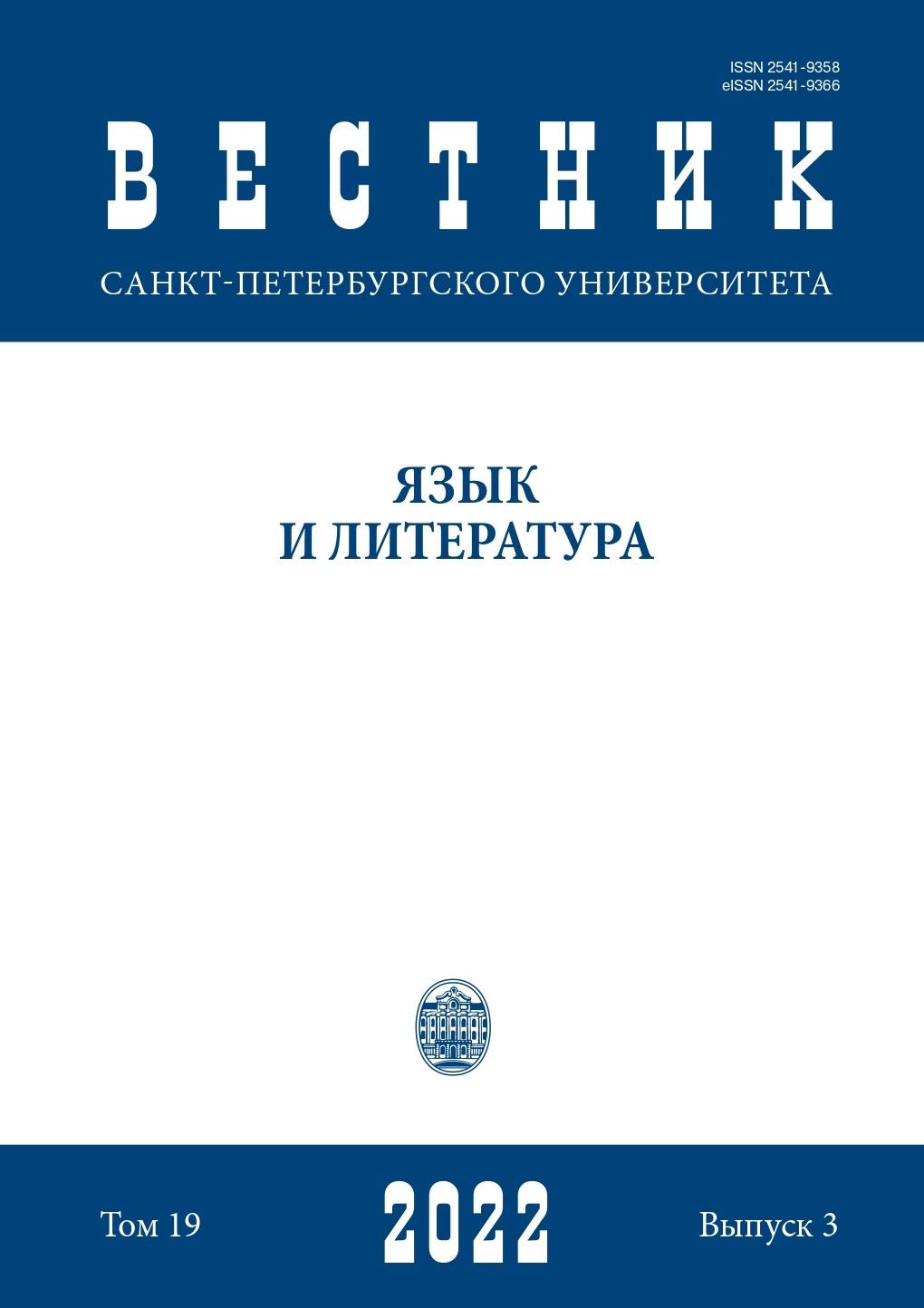Why is it so difficult to film Gogol’s Overcoat
DOI:
https://doi.org/10.21638/spbu09.2022.308Abstract
Nikolai Gogol’s prose conceals semantic hidden agenda safely disguised by grotesque fabula and metaphorics. We can find the phenomena in Gogol’s early works but this multilevel approach is even more elaborately designed in his later period when his attention was occupied with St Petersburg material. The Overcoat contains a complex system of codes. Unless a reader is aware of them the story may produces on him an illusory impression of a realistic composition (indeed, it was even mistaken for a kind of manifesto of Russian realism). Its symbolism is hidden, but amenable to reconstruction. The whole plot of Gogol’s story is a woeful parody on Christianity. Gogol’s Petersburg here is intentionally presented as a city inhabited by the dead. A special place in The Overcoat is occupied by the figure of the tailor Petrovich: it contains both a demonic component, supported by many signs of the devil, and an indication of the name of the founder of St Petersburg, Peter the Great. A significant role in The Overcoat is played by connections with E.T.A.Hoffmann’s Golden Pot and F.M.Dostoevsky’s The Idiot: as a copyist, Akakii Akakievich Bashmachkin is involved in mysticism. The deep plan of the story is connected with the transition from sign to meaning. But the acquired meaning turns into a temptation for the hero: the overcoat leads Akakii into the realm of temptations, awakening a previously unknown attraction to external reality. All of this makes it extremely problematic to make an adequate film adaptation of The Overcoat.
Keywords:
N.V.Gogol, Petersburg Tales, film adaptation, E.T.A.Hoffmann, F.M.Dostoevsky
Downloads
References
Белый 1934 — Белый А. Мастерство Гоголя. М.: ОГИЗ; Л.: Гос. изд-во худож. лит., 1934.
Бочаров, Манн 1988 — Бочаров С., Манн Ю. Все мы вышли из гоголевской «Шинели». Вопросы литературы. 1988, (6): 183–185.
Вайскопф 2002 — Вайскопф М.Я. Сюжет Гоголя. Морфология, идеология, контекст. М.: Рос. гос. гуманитар. ун-т, 2002.
Дилакторская 1986 — Дилакторская О.Г. Фантастическое в «Петербургских повестях» Н.В.Гоголя. Владивосток: Изд-во Дальневост. ун-та, 1986.
Ермаков 1924 — Ермаков И.Д. Очерки по анализу творчества Н.В.Гоголя (органичность произведений Гоголя). М.; Пг.: Гос. изд-во, 1924.
Рейсер 1968 — Рейсер С. «Все мы вышли из гоголевской “Шинели”». Вопросы литературы. 1968, (2): 184–187.
Тынянов 1977 — Тынянов Ю.Н. Поэтика. История литературы. Кино. М.: Наука, 1977.
Ульянов 1959 — Ульянов Н. Арабеск или Апокалипсис? Новый журнал. 1959, (LVII): 116–131.
Чижевский 1938 — Чижевский Д. О «Шинели» Гоголя. Современные записки. 1938, (XVII): 172–195.
Эйхенбаум 1969 — Эйхенбаум Б. Как сделана «Шинель» Гоголя. В кн.: Эйхенбаум Б. О прозе: сб. ст. Л.: Художественная литература, 1969.
Driessen 1965 — Driessen F.C. Gogol as a Short-Story Writer. A Study of His Technique of Composition. The Hague: Mouton, 1965.
Rancour-Laferriere 1982 — Rancour-Laferriere D. Out from under Gogol’s “Overcoat”. A Psychoanalytic Study. Ann Arbour: Ardis, 1982.
Downloads
Published
How to Cite
Issue
Section
License
Articles of "Vestnik of Saint Petersburg University. Language and Literature" are open access distributed under the terms of the License Agreement with Saint Petersburg State University, which permits to the authors unrestricted distribution and self-archiving free of charge.






